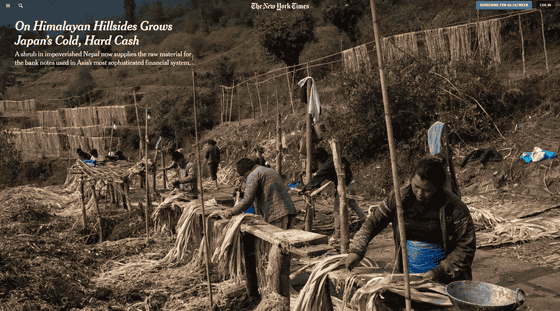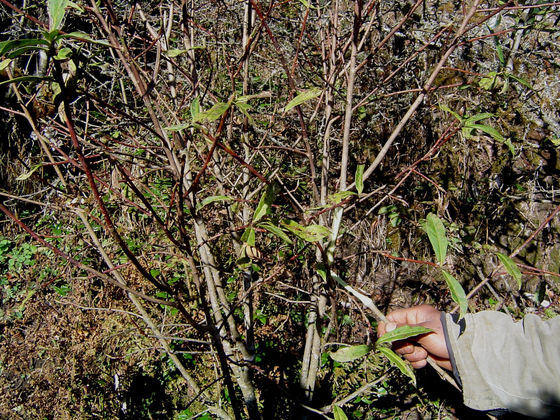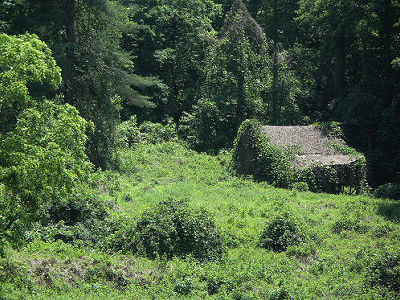Most of the Mitsumata trees that form the basis of Japanese banknotes are made in Nepal.

The plant used to make Japanese banknotes is called 'Mitsumata.' It used to be widely cultivated in Japan, but production has decreased since 2005, and most of it is now imported from Nepal.
Kanpo WEB+SHOP
On Himalayan Hillsides Grows Japan's Cold, Hard Cash - The New York Times
https://www.nytimes.com/2024/04/15/world/asia/nepal-japan-yen-argeli.html

Japanese Yen, Made in Nepal | Nepali Times
'Mitsumata' is originally native to Nepal and China, and is named after the fact that the ends of its branches are divided into three. In Nepal, it is called 'Argeri'.

Mitsumata grows at altitudes of about 1,500 to 3,000 meters, and is currently cultivated in 55 districts in Nepal.
Mitsumata does not suffer from diseases and is not eaten by cows or insects, but if it is not properly dried during the cold season, it will rot.
Harvesting occurs five years after planting, from October to February. If the moisture content is high, the fruit will turn green and be considered of low quality.
Mitsumata cultivation in Japan has declined due to a decline in the number of farmers caused by aging, but one of the reasons why imports from Nepal now account for 90% of the total is the major earthquake in 2015. Experts were dispatched from Japan to support farmers in Mitsumata cultivation.
Walking through Kathmandu city where many buildings collapsed in the Nepal earthquake - GIGAZINE

Exports are growing rapidly, with annual profits reaching 100 million rupees (about 116 million yen) in 2022. In the case of Mr. Sherpa of Puwamajuwa village, who was interviewed by The New York Times, he expects to make a profit of $60,000 (about 9.27 million yen), while the average annual income of Nepalese people is $1,340 (about 207,000 yen).
Related Posts:
in Note, Posted by logc_nt







